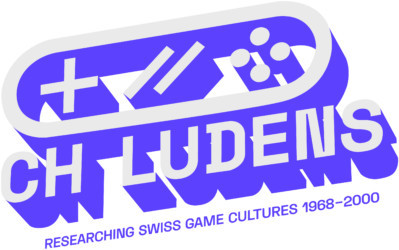Historicizing G.A.M.E.S. 2025 – Gaming, Artifacts, Memory, Experience and Society

Date: 11.09.2025 - 12.09.2025
Conference / symposium
Format: onsite
Location: Bern, Switzerland
Event Fee: Free
Organizer(s):
Confoederatio Ludens
How do we write a history of video gaming? As scholars argue (Sicart, 2011; Triclot, 2011; Newman, 2017; Trépanier-Jobin, 2021; Berry, 2022), video gaming should be understood as an ongoing interaction between artifacts—such as games, rules, machines, screens, images, or stories—and players, whose practices are embedded in specific cultural contexts. Moving beyond an inventorying perspective and the history of the video game industry alone, this conference invites participants to explore the history of video games from the players’ perspectives. Since its commercialization during the 1970s, the expansion of video game culture has not only been linked to the diffusion of its artifacts but has also been embedded in broader historical and cultural transformations. Indeed, throughout the 20th century—and particularly in the post-war period and within the context of the Cold War—Western countries experienced the massive development of leisure industries. This shift was supported by increases in free time, educational opportunities, and purchasing power. Such social, economic, political, and ideological transformations helped redefine the role of leisure, including play, in society (Blackshaw, 2015). This period, during which video games emerge as an object, an industry and a set of media practices, corresponds to the advent of what Reckwitz (2020) calls the society of singularities. Although aspects of modernity, such as rationalization, standardization or quantification of society still provide the infrastructure for social processes, Reckwitz argues that late modernity is characterized by the sociocultural construction of the exceptionality of events, social roles, and artefacts that now determine how society is experienced in the late 20th and early 21st centuries. This shift is largely driven by the emerging cultural industries and their means of communication, including video games. On the one hand, gaming enables social, communicative, identity and meaning-generating processes between players and society, by offering spaces and tools for social exchange, distinction and communitization. On the other hand, it allows players to withdraw themselves and actively experience diverse narratives, worlds and situations providing a certain distance from their social environment. In short: in late modernity, a sphere of player and gaming cultures is developing that manifests itself in objects, subjects, spaces, temporalities and collectives around the medium “game”. The conference aims to encourage participants from all disciplines to explore the sphere of gaming culture from the players’ perspectives. How has it evolved from its earliest days, and how can today’s phenomena in gaming culture be traced in relation to their historical heritage? How have relationships between objects, subjects, spaces, temporalities, and collectives shaped gaming cultures? How can these phenomena, relationships, and artifacts be categorized phenomenologically and epistemologically? What has been the nature of the connections between producers, consumers, artifacts, and their political and social environments in this developing cultural industry? How can these aspects be analyzed theoretically and methodologically, especially given their volatility and constant transformation?
https://chludens.hypotheses.org/3389
Call for Papers
Historicizing G.A.M.E.S. 2025 – Gaming, Artifacts, Memory, Experience and Society
Deadline: 14.03.2025
Post created by: Lymor Wolf Goldstein